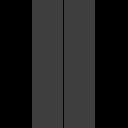 W
WThe algebraic reconstruction technique (ART) is an iterative reconstruction technique used in computed tomography. It reconstructs an image from a series of angular projections. Gordon, Bender and Herman first showed its use in image reconstruction; whereas the method is known as Kaczmarz method in numerical linear algebra.
 W
WAQUA@home was a distributed computing project operated by D-Wave Systems and running on the Berkeley Open Infrastructure for Network Computing (BOINC) software platform. It closed down in August 2011. Its goal was to predict the performance of superconducting adiabatic quantum computers on a variety of problems arising in fields ranging from materials science to machine learning. It designed and analyzed quantum computing algorithms, using Quantum Monte Carlo techniques.
 W
WWilliam Buchanan OBE FBCS CEng PFHEA is a Scottish computer scientist. Buchanan was born in Falkirk, Scotland in 1961. He currently leads the Centre for Distributed Computing and Security at Edinburgh Napier University. He is a Professor in the School of Computing.
 W
WIn telecommunication and information theory, the code rate of a forward error correction code is the proportion of the data-stream that is useful (non-redundant). That is, if the code rate is for every bits of useful information, the coder generates a total of bits of data, of which are redundant.
 W
WThe Computer Science Tripos (CST) is the undergraduate course in computer science offered by the University of Cambridge Computer Laboratory. It evolved out of the Diploma in Computer Science, the world's first taught course in computer science, which started in 1953. Successful candidates are awarded a Bachelor of Arts (BA) honours degree after three years or, optionally, a combined BA + Master of Engineering (MEng) honours degree after four years of study.
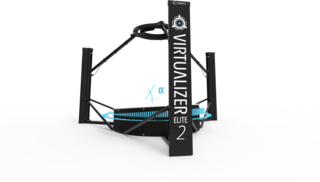 W
WThe Virtualizer is a series of omnidirectional treadmills with integrated sensors for motion detection in virtual reality applications. The products are being developed, manufactured and sold by the Austrian company Cyberith GmbH.
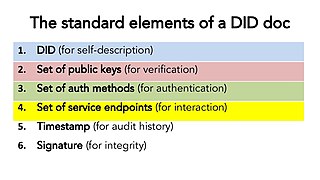 W
WDecentralized identifiers (DIDs) are a type of identifier that enables a verifiable, decentralized digital identity. They are based on the Self-sovereign identity paradigm. A DID identifies any subject that the controller of the DID decides that it identifies. These identifiers are designed to enable the controller of a DID to prove control over it and to be implemented independently of any centralized registry, identity provider, or certificate authority. DIDs are URLs that associate a DID subject with a DID document allowing trustable interactions associated with that subject. Each DID document can express cryptographic material, verification methods, or service endpoints, which provide a set of mechanisms enabling a DID controller to prove control of the DID. Service endpoints enable trusted interactions associated with the DID subject. A DID document might contain semantics about the subject that it identifies. A DID document might contain the DID subject itself.
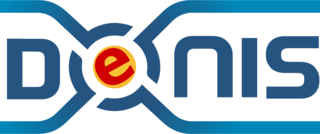 W
WDENIS@Home is a distributed computing project hosted by San Jorge University and running on the Berkeley Open Infrastructure for Network Computing (BOINC) software platform. The primary goal of DENIS@Home is to compute large amounts of cardiac electrophysiological simulations.
 W
WThe Department of Computer Science at the University of Bristol, is the computer science department of the University of Bristol and is based in the Merchant Venturers building on Woodland Road, close to Bristol city centre. As of 2015 the department is home to 40 academic staff, 61 research staff, 25 support staff, 112 PhD research students, 127 MSc students and 458 undergraduate students.
 W
WIn computer science, a dichotomic search is a search algorithm that operates by selecting between two distinct alternatives (dichotomies) at each step. It is a specific type of divide and conquer algorithm. A well-known example is binary search.
 W
WIn computer science, a digital electronic computer is a computer machine which is both an electronic computer and a digital computer. Examples of a digital electronic computers include the IBM PC, the Apple Macintosh as well as modern smartphones. When computers that were both digital and electronic appeared, they displaced almost all other kinds of computers, but computation has historically been performed in various non-digital and non-electronic ways: the Lehmer sieve is an example of a digital non-electronic computer, while analog computers are examples of non-digital computers which can be electronic, and mechanical computers are examples of non-electronic computers. An example of a computer which is both non-digital and non-electronic is the ancient Antikythera mechanism found in Greece. All kinds of computers, whether they are digital or analog, and electronic or non-electronic, can be Turing complete if they have sufficient memory. A digital electronic computer is not necessarily a programmable computer, a stored program computer, or a general purpose computer, since in essence a digital electronic computer can be built for one specific application and be non-reprogrammable. As of 2014, most personal computers and smartphones in people's homes that use multicore central processing units are also parallel computers using the MIMD paradigm, a technology previously only used in digital electronic supercomputers. As of 2014, most digital electronic supercomputers are also cluster computers, a technology that can be used at home in the form of small Beowulf clusters. Parallel computation is also possible with non-digital or non-electronic computers. An example of a parallel computation system using the abacus would be a group of human computers using a number of abacus machines for computation and communicating using natural language.
 W
WIn cluster analysis, the elbow method is a heuristic used in determining the number of clusters in a data set. The method consists of plotting the explained variation as a function of the number of clusters, and picking the elbow of the curve as the number of clusters to use. The same method can be used to choose the number of parameters in other data-driven models, such as the number of principal components to describe a data set.
 W
WIn theoretical computer science, in particular in automated theorem proving and term rewriting, the containment, or encompassment, preorder (≤) on the set of terms, is defined bys ≤ t if a subterm of t is a substitution instance of s.
 W
WA focus-plus-context screen is a specialized type of display device that consists of one or more high-resolution "focus" displays embedded into a larger low-resolution "context" display. Image content is displayed across all display regions, such that the scaling of the image is preserved, while its resolution varies across the display regions.
 W
WThe gem5 simulator is an open-source system-level and processor simulator. It is utilized in academic research and in industry by companies such as ARM Research, AMD Research, Google, Micron, Metempsy, HP, and Samsung.
 W
WGenome Informatics is a scientific study of information processing in genomes.
 W
WIn computer science, a graph-structured stack (GSS) is a directed acyclic graph where each directed path represents a stack. The graph-structured stack is an essential part of Tomita's algorithm, where it replaces the usual stack of a pushdown automaton. This allows the algorithm to encode the nondeterministic choices in parsing an ambiguous grammar, sometimes with greater efficiency.
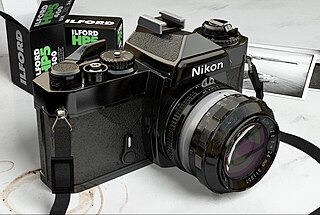 W
WIn computer graphics the Graphics Turing Test is a variant of the Turing Test, the twist being that a human judge viewing and interacting with an artificially generated world should be unable to reliably distinguish it from reality.
 W
WHot Chips is technological symposium held every year in August in Silicon Valley.
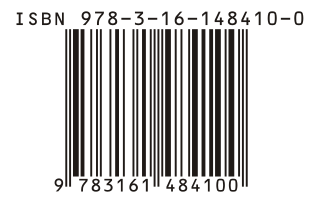 W
WA human-readable medium or human-readable format is any encoding of data or information that can be naturally read by humans.
 W
WThe import and export of data is the automated or semi-automated input and output of data sets between different software applications. It involves "translating" from the format used in one application into that used by another, where such translation is accomplished automatically via machine processes, such as transcoding, data transformation, and others. True exports of data often contain data in raw formats otherwise unreadable to end-users without the user interface that was designed to render it.
 W
WInterPlaNet (IPN), not to be confused with InterPlanetary Network, is a computer networking protocol designed to operate at interplanetary distances, where traditional protocols such as the Internet Protocol break down. It is the base for Interplanetary Internet. It has been under development by Vint Cerf and NASA since 1998 and a permanent network link to Mars was planned by 2008 until the Mars Telecommunications Orbiter was canceled in 2005. The protocol was expected to be space-qualified and ready for use by around 2010.
 W
WIn computer science, a ragged array, also known as a jagged array, is an array of arrays of which the member arrays can be of different lengths, producing rows of jagged edges when visualized as output. In contrast, two-dimensional arrays are always rectangular so jagged arrays should not be confused with multidimensional arrays, but the former is often used to emulate the latter.
 W
WA KDL is a term used on BeOS/Haiku and possibly other operating systems for a serious kernel error which causes the computer to drop into the kernel debugger.
 W
WMink is a 3D printing company based in New York. The company created a 3D printer allows users to select any color and print it into an eye shadow pod.
 W
WMoodbar is a computer visualization used for navigating within a piece of music or any other recording on a digital audio track. This is done with a commonly horizontal bar that is divided into vertical stripes. Each stripe has a colour combination showing the "mood" within a short part of the audio track. The colour can depend on spectrum and/or rhythmic features of the part of the track. If the audio is a song then various parts of it as well as changes are differently coloured on the bar. If the audio is a speech or an interview then the moodbar displays different speaking segments in unique colour combinations.
 W
WParallel slowdown is a phenomenon in parallel computing where parallelization of a parallel algorithm beyond a certain point causes the program to run slower.
 W
WThe polar surface area (PSA) or topological polar surface area (TPSA) of a molecule is defined as the surface sum over all polar atoms or molecules, primarily oxygen and nitrogen, also including their attached hydrogen atoms.
 W
WIn computability theory, the theory of real computation deals with hypothetical computing machines using infinite-precision real numbers. They are given this name because they operate on the set of real numbers. Within this theory, it is possible to prove interesting statements such as "The complement of the Mandelbrot set is only partially decidable."
 W
WIn cellular automata such as Conway's Game of Life, a reflector is a pattern that can interact with a spaceship to change its direction of motion, without damage to the reflector pattern. In Life, many oscillators can reflect the glider; there also exist stable reflectors composed of still life patterns that, when they interact with a glider, reflect the glider and return to their stable state.
 W
WIn cellular automata, a replicator is a pattern that produces copies of itself.
 W
WRule induction is an area of machine learning in which formal rules are extracted from a set of observations. The rules extracted may represent a full scientific model of the data, or merely represent local patterns in the data.
 W
WIn Conway's Game of Life and related cellular automata, a spacefiller is a pattern that spreads out indefinitely, eventually filling the entire space with a still life pattern. It typically consists of three components: stretchers that resemble spaceships at the four corners of the pattern, a growing boundary region along the edges of the pattern, and the still life in the interior pattern.
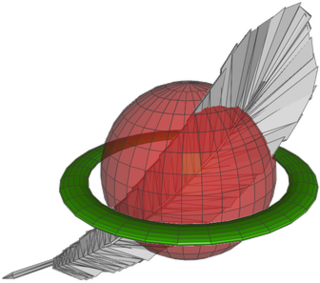 W
WSpatiaLite is a spatial extension to SQLite, providing vector geodatabase functionality. It is similar to PostGIS, Oracle Spatial, and SQL Server with spatial extensions, although SQLite/SpatiaLite aren't based on client-server architecture: they adopt a simpler personal architecture. i.e. the whole SQL engine is directly embedded within the application itself: a complete database simply is an ordinary file which can be freely copied and transferred from one computer/OS to a different one without any special precaution.
 W
WStooge sort is a recursive sorting algorithm. It is notable for its exceptionally bad time complexity of O(nlog 3 / log 1.5 ) = O(n2.7095...). The running time of the algorithm is thus slower compared to reasonable sorting algorithms, and is slower than Bubble sort, a canonical example of a fairly inefficient sort. It is however more efficient than Slowsort. The name comes from The Three Stooges.
 W
WSureType is a QWERTY-based character input method for cell phones which is used on the BlackBerry Pearl. SureType combines a traditional telephone keypad with a QWERTY-based keyboard to create a non-standard way to input text on a cell phone. In addition, SureType contains a list of 35,000 English words, so when a user types the beginning of a word, all the possible words which start with those letters show up on the screen. Additional words can also be added to the word list.
 W
WSurfel is an abbreviated term for a "surface element," analogous to a "voxel" or a "pixel". In 3D computer graphics, the use of surfels is an alternative to polygonal modeling. An object is represented by a dense set of points or viewer-facing discs holding lighting information. Surfels are well suited to modeling dynamic geometry, because there is no need to compute topology information such as adjacency lists. Common applications are medical scanner data representation, real time rendering of particle systems, and more generally, rendering surfaces of volumetric data by first extracting the isosurface.
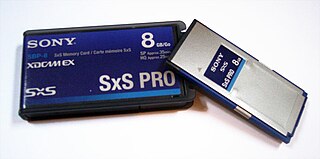 W
WSxS (S-by-S) is a flash memory standard compliant to the Sony and SanDisk-created ExpressCard standard. According to Sandisk and Sony, the cards have transfer rates of 800 Mbit/s and burst transfer rate of up to 2.5 Gbit/s over the ExpressCard's PCI Express interface. Sony uses these cards as the storage medium for their XDCAM EX line of professional video cameras.
 W
WIn scientific visualization, texture advection is a family of methods to densely visualize vector fields or flows. Scientists can use the created images and animations to better understand these flows and reason about them. In comparison to techniques that visualise streamlines, streaklines, or timelines, methods of this family don't need any seed points and can produce a whole image at every step.
 W
WIn computing, tombstone diagrams consist of a set of “puzzle pieces” representing compilers and other related language processing programs. They are used to illustrate and reason about transformations from a source language to a target language realised in an implementation language. They are most commonly found describing complicated processes for bootstrapping, porting, and self-compiling of compilers, interpreters, and macro-processors.